
Gaetano Apolline Baldassarre Vestris, French ballet dancer, was born in Florence and made his debut at the opera in 1749.

Marie Taglioni, Comtesse de Voisins was a Swedish-born ballet dancer of the Romantic ballet era partially of Italian descent, a central figure in the history of European dance. She spent most of her life in the Austrian Empire and France. She was one of the most celebrated ballerinas of the romantic ballet, which was cultivated primarily at Her Majesty's Theatre in London and at the Théâtre de l'Académie Royale de Musique of the Paris Opera Ballet. She is credited with being the first ballerina to truly dance en pointe.
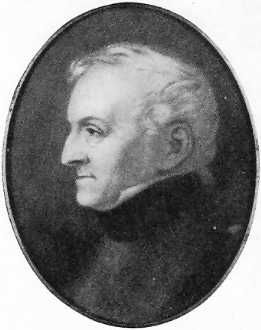
Filippo Taglioni was an Italian dancer and choreographer and personal teacher to his own daughter, Romantic ballerina Marie Taglioni. Also, although August Bournonville's version is better known, it was Taglioni who was the original choreographer of La Sylphide, in 1832.

Carlotta Grisi was an Italian ballet dancer. Born in Visinada, Istria. Although her parents were not involved in the theatre, she was brought up in an opera family. She was trained at the ballet school of Teatro alla Scala in Milan and later with dancer/balletmaster Jules Perrot. She was especially noted for her performance in the classic role of Giselle.

Francesca "Fanny" Cerrito was an Italian ballet dancer and choreographer. She was a ballerina noted for the brilliance, strength, and vivacity of her dancing. She was also one of few women in the 19th century to be recognized for her talent as a choreographer.

Pavel Andreyevich Gerdt, also known as Paul Gerdt, was the Premier Danseur Noble of the Imperial Ballet, the Bolshoi Kamenny Theatre, and the Mariinsky Theatre for 56 years, making his debut in 1860, and retiring in 1916. His daughter Elizaveta Gerdt was also a prominent ballerina and teacher.

A ballet master is an employee of a ballet company who is responsible for the level of competence of the dancers in their company. In modern times, ballet masters are generally charged with teaching the daily company ballet class and rehearsing the dancers for both new and established ballets in the company's repertoire. The artistic director of a ballet company, whether a male or female, may also be called its ballet master. Historic use of gender marking in job titles in ballet is being supplanted by gender-neutral language job titles regardless of an employee's gender.
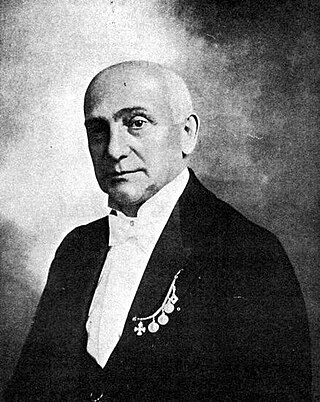
Enrico Cecchetti was an Italian ballet dancer, mime, and founder of the Cecchetti method. The son of two dancers from Civitanova Marche, he was born in the costuming room of the Teatro Tordinona in Rome. After an illustrious career as a dancer in Europe, he went to dance for the Imperial Ballet in St. Petersburg, Russia, where he further honed his skills. Cecchetti was praised for his agility and strength in his performances, as well as his technical abilities in dance. By 1888, he was widely accepted as the greatest ballet virtuoso in the world.
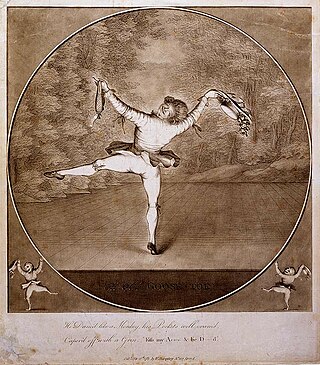
Marie-Jean-Augustin Vestris, known as Auguste Vestris, was a French dancer.

The Salle Le Peletier or Lepeletier was the home of the Paris Opera from 1821 until the building was destroyed by fire in 1873. The theatre was designed and constructed by the architect François Debret on the site of the garden of the Hôtel de Choiseul on the rue Lepeletier. Due to the many changes in government and management during the theatre's existence, it had a number of different official names, the most important of which were: Théâtre de l'Académie Royale de Musique (1821–1848), Opéra-Théâtre de la Nation (1848–1850), Théâtre de l'Académie Nationale de Musique (1850–1852), Théâtre de l'Académie Impériale de Musique (1852–1854), Théâtre Impérial de l'Opéra (1854–1870), and Théâtre National de l'Opéra (1870–1873).

Jules-Joseph Perrot was a French dancer and choreographer who later became Ballet Master of the Imperial Ballet in St. Petersburg, Russia. He created some of the most famous ballets of the 19th century including Pas de Quatre, La Esmeralda, Ondine, and Giselle with Jean Coralli.
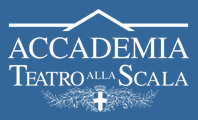
La Scala Theatre Ballet School is one of the leading classical ballet schools in the world and is the associate school of La Scala Theatre Ballet, an international ballet company based at La Scala in Milan, Italy. The school forms part of the theatre's Academy for Performing Arts.
The La Scala Theatre Ballet is the resident classical ballet company at La Scala in Milan, Italy. One of the oldest and most renowned ballet companies in the world, the company pre-dates the theatre, but was officially founded at the inauguration of La Scala in 1778. Many leading dancers have performed with the company, including Mara Galeazzi, Alessandra Ferri, Viviana Durante, Roberto Bolle and Carla Fracci. The official associate school of the company is the La Scala Theatre Ballet School, a constituent of the La Scala Theatre Academy.
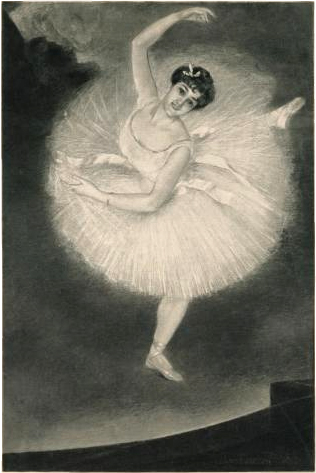
Carlotta Zambelli was an Italian prima ballerina and ballet teacher. Apart from a year in St. Petersburg, she spent her entire career in Paris.

The important place of women in dance can be traced back to the origins of civilization. Cave paintings, Egyptian frescos, Indian statuettes, ancient Greek and Roman art and records of court traditions in China and Japan all testify to the important role women played in ritual and religious dancing from the start. In the Middle Ages, what has become known as ballet had its beginnings in Italian court festivals when women frequently played the parts of men. It was however in late 17th-century France that the Paris Opera produced the first celebrated ballerinas. While women began to dominate the ballet scene in the 18th century, it was with the advent of Romantic ballet in the 19th century that they became the undisputed centre of attraction with stars playing the leading roles in the works of Marius Petipa, appearing in theatres across Europe from Milan's La Scala to the Mariinsky Theatre in Saint Petersburg. More recently, women have played a leading role in developing various forms of modern dance including flamenco and expressionist dance.

Amalia Brugnoli (1803–1892) was an Italian ballerina. Brugnoli is said to have been the first dancer to have used the pointe technique when in 1823, she performed on full pointe in Armand Vestris' La Fée et le Chevalier in Vienna.

Sofia Fuoco, was an Italian ballerinn, born as Maria Brambilla; her stage name, Fuoco means ″Fire″ in Italian.

Louis Henry was a French dancer and choreographer.

Salvatore Taglioni was an Italian dancer and choreographer who danced and produced ballets in the 19th century.